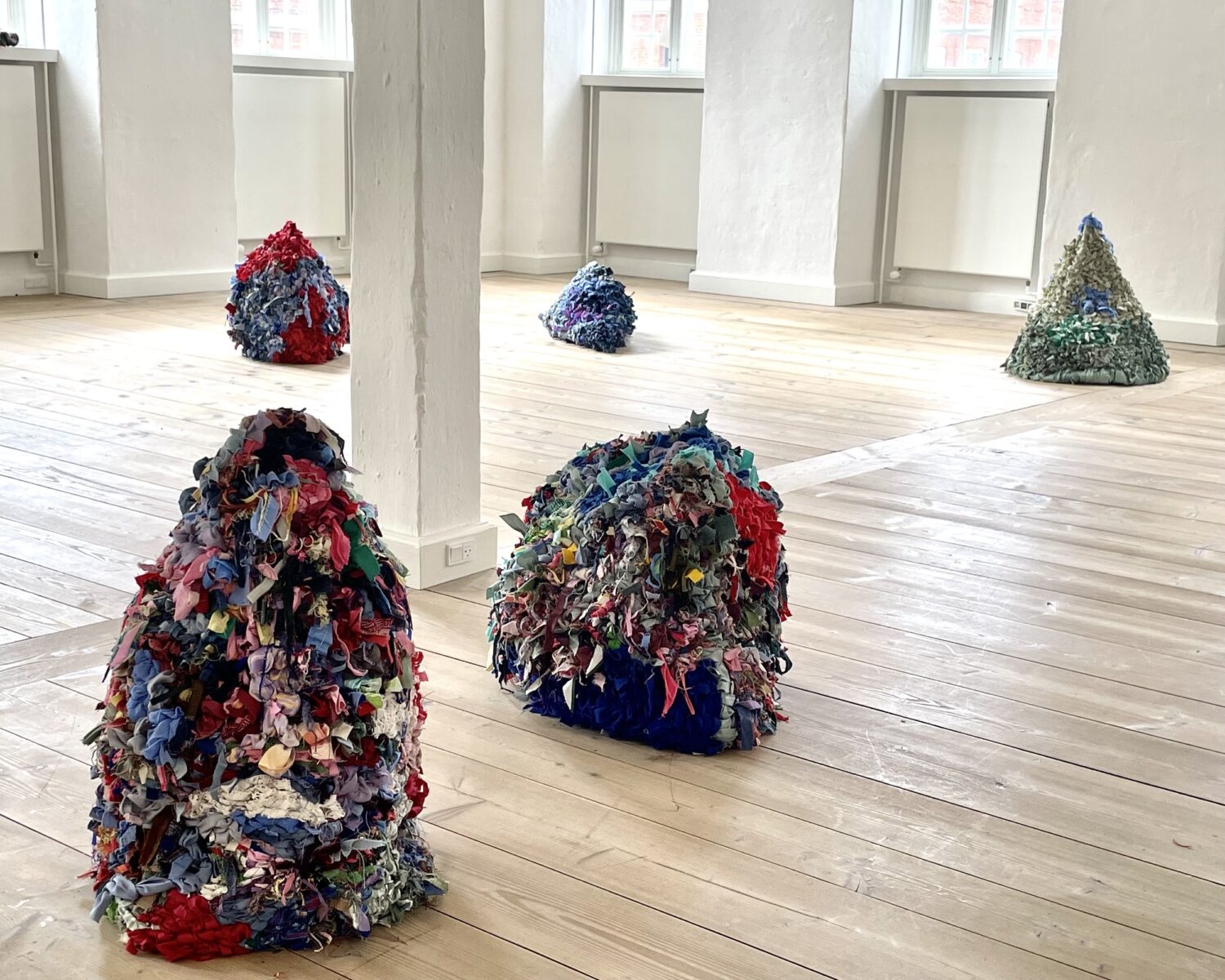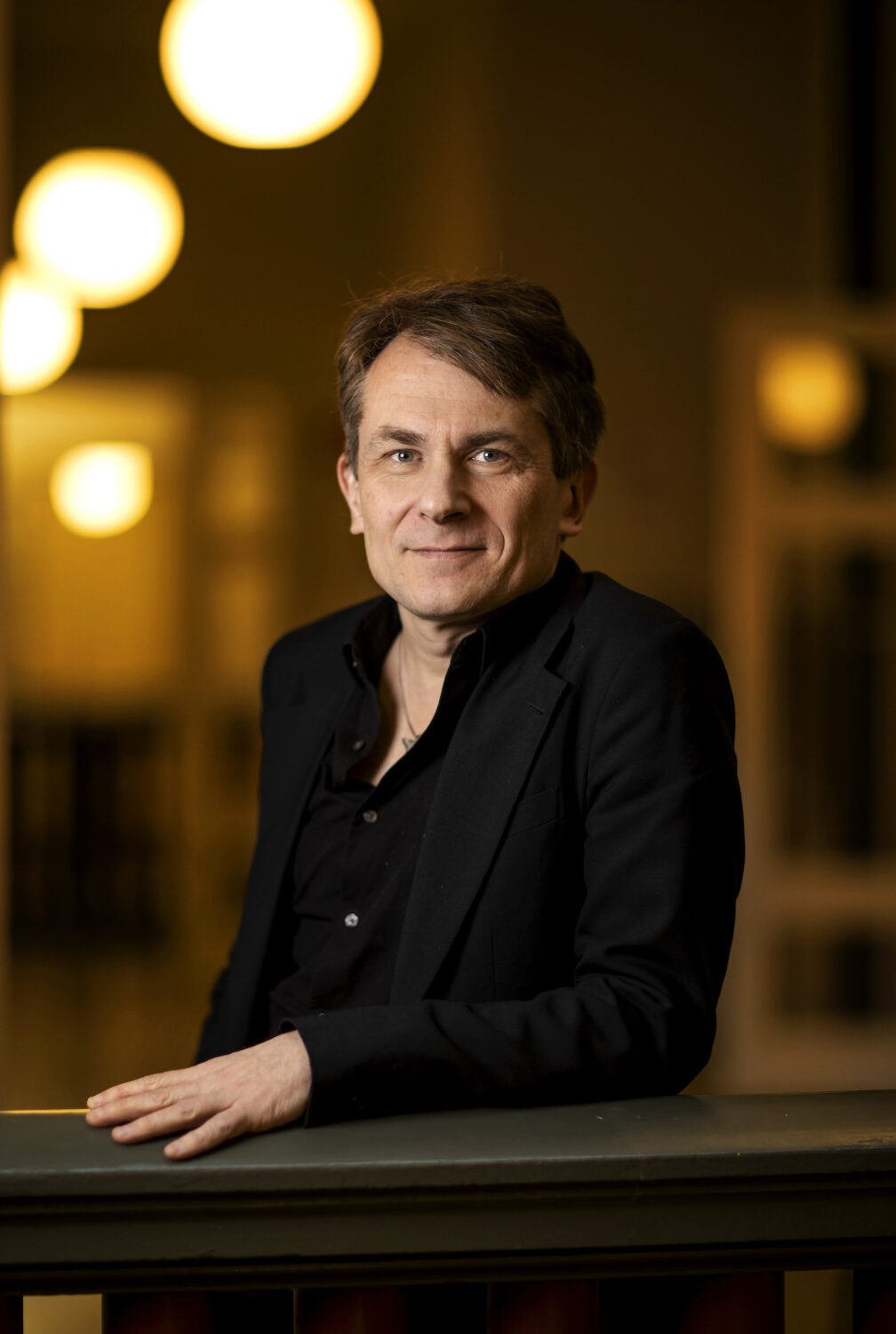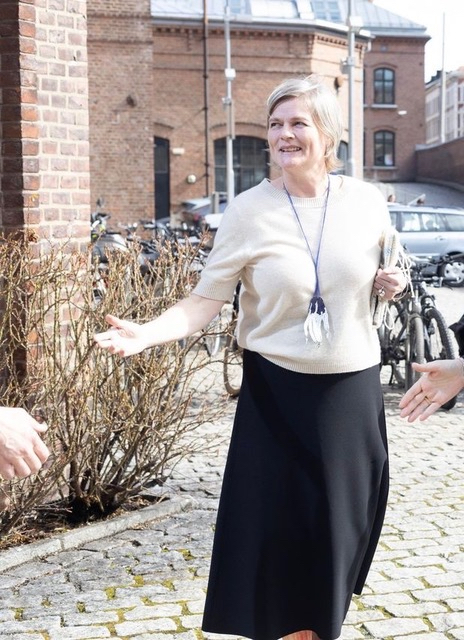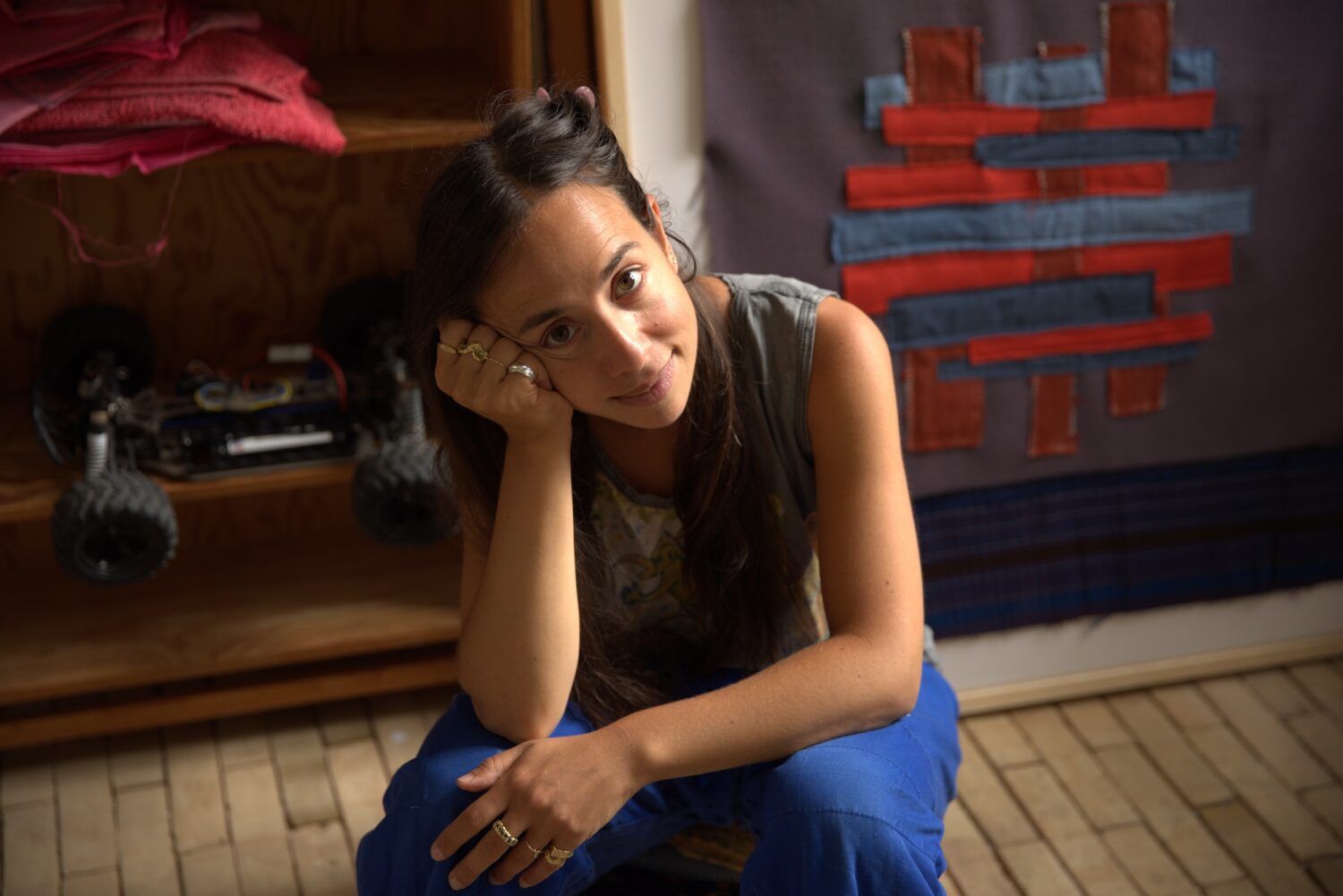When Rebecca Lajboschitz looks back on one of her first encounters with ‘box thinking,’ it’s the Goldsmiths art academy in London that comes to mind.
‘I once received criticism for making a suit. I remember they asked: Why did you make a suit when you’re studying fine art? I couldn’t explain it at the time, because I didn’t have that awareness yet.’
Back then – as today – Rebecca experimented with working at the intersection, just as she has always been drawn to things that don’t fit into a specific ‘box.’ The now 35-year-old artist interprets various craft techniques in her works, and she has chosen education with curiosity in mind rather than a specific goal.
At the age of 20, Rebecca went to London to study at Goldsmiths, but after two years, she dropped out. She was constantly demanded answers as to why she did what she did, and it inhibited her creativity.
After a few more years in the city, working for various designers and taking individual courses, she returned home to Copenhagen to attend the Fashion Design Academy (a sewing design school, which closed in 2020) followed by the introductory course for the goldsmith education at a technical school.

Like peeing into the wind
Today, she still experiences that the biggest obstacle is the ‘box thinking’ at play, both from the industry and those otherwise interested in art. At the same time, it has become her modus operandi to draw from various crafts and make it her own.
‘It can feel like peeing into the wind. Because I don’t always immediately receive the acceptance that what I’m doing is art and not just crafts,’ Rebecca explains.
She elaborates that there is a barrier that several people need to overcome when she tells them she creates images with textiles, something she doesn’t experience with more conventional art forms.
‘If you ask people to think of a tool and a color, everyone thinks ‘red hammer’. There are just some encoded frames of understanding at play, and if you create something that doesn’t fit into them, you have to explain it.’
That’s why she has started saying that she paints with textiles, to describe what she does with very few words.
But peeing into the wind is also a good exercise. Rebecca explains that she thrives in this paradox. Mixing craft techniques for works – whether in jewelry, paintings, sculptures, or something else entirely – is like a double-edged sword.
‘On one hand, I find it annoying and frustrating, and on the other hand, it means that I have to push myself to explore and become more aware of what I’m doing, and become better at putting it into words.’

An Experimental Approach
When Rebecca looks back on the journey from Goldsmiths in London to the goldsmith education in Copenhagen, there’s something that stands out. Several times along the way, she realized that the straight path wasn’t for her.
At the Fashion Design Academy, she became proficient at sewing, even sewing straight lines. But she quickly concluded that there were others with more flair for it. And often, she became stubborn when faced with a specific task.
‘If I see a ring that should be a certain way, I feel like doing it differently. I feel like inventing my own methods and cowboy tricks to solve things.’
Rebecca realized that she had to go her own way when she was demanded too many answers, and the craftsmanship lines became too tight.
‘My approach has been more experimental, like a physics project. I find answers myself as to whether it makes sense. Because if you put too many words on why and invent a solution, it can be difficult for me to deviate from it afterward and remain open.’
Academicization is unfortunate
For Rebecca, it’s not about challenging the Danish education system, which she admits she doesn’t have much experience with. For her, it’s about finding joy in allowing herself to blend genres. She believes we should stop asking so many questions.
‘Most artists I know haven’t come up with anything brilliant by sitting and writing about it and thinking about it. Most start with a sudden curiosity and something they intuitively pour their love into.’
‘Generally, I think the increasing academicization is a bit unfortunate. I think it gives what it’s about – creating art – a hard time when you have to do academic tasks and argue more about why you do what you do.’
According to Rebecca, one should keep in mind that the arguments don’t weigh heavier than the magic in the work, the artistic, the special, the peculiar. Everything that stands out and makes the work interesting.
Creating her own box
When asked whether Rebecca has found her own box today, she laughs and replies:
‘I don’t think there’s a box for me. I’ve realized that I create it myself, but within an artistic context. Previously, I was probably obsessed with finding a box that suited me. I spent a lot of my twenties on that. You try to figure out where you’re supposed to fit in.’
In that way, she has found her own path as an artist today.
‘I’m just an example of someone who maybe couldn’t really find a place that fit and therefore flails with arms and legs to try to create it myself.’

Spillover effect
Rebecca sees it as a strength to be able to do many things and combine creative approaches and ideas.
‘Think about the Børsen building that burned down. The spire, it was designed by Christian IV’s pyrotechnician. Maybe he didn’t know how to execute it, but there were others who could. He had a vision, could shape something. You don’t get that if you put people in a box and say they can only operate within it.’
According to Rebecca, one should be aware that they can do many different things. It has become a philosophy for her.
‘You shouldn’t see yourself as locked into one task. And then you should be open to a spillover effect. That can lead to really good things. It can be collaborations across creative fields or, like I do, pouring from one cup to another.’
Facts
Rebecca Nina Bloch Lajboschitz is 35 years old. She works as an artist, primarily focusing on textile-based work in recent years, but freely blends genres and also works with ceramics, plastic, and precious metals. Last year, Rebecca exhibited at venues such as Outpost Gallery and collaborated with Aiayu in Nordhavn, Copenhagen. Her major idols are Sonja Delauney and Alexander Calder, both of whom worked at intersections and in a mix of artistic genres.
Follow her on: leibohellohello.com and Instagram.
Theme: The changing educational landscape
The changing landscape of Danish arts and design schools has been undergoing transformation over the years. Political reforms, budget cuts, name changes, box thinking, and the climate crisis all influence how artisans and designers are educated. Formkraft provides a platform for various voices to gain insight into the nuanced opportunities and challenges presented by these changes in the field. Currently, Designskolerne is negotiating the outcome of the latest graduate reform, and Formkraft will follow up when the schools make statements.
Further reading…
Navigating Changes: Challenges in Danish Crafts and Design Education
The Danish tradition of crafts and design is at risk, and young design enthusiasts may need to consider foreign alternatives to pursue a master’s degree. Formkraft explores downward trends and raises important questions about the future of Danish crafts and design.
Read editorial by Anders V. Munch, h.D. Master of History of Ideas and Art History

Troels Degn on the design education in Denmark: Academization is not the problem
The academization of Danish craft and design education has been met with much criticism, especially from students. However, if you ask Troels Degn Johansson, former associate professor and head of department at the Royal Danish Academy, academization has improved the education in several areas.

Norway: Craft and art education is a good investment in tolerance and democratic values
Marianne Skjulhaug mentions that political support for the area is declining, and this has led to pressure on arts education in Norway:
‘Financing is being reduced, and unfortunately, there is very little understanding that arts education is particularly costly, on par with and sometimes more expensive than, for example, medicine. I fear that politicians do not understand the importance of educating ‘homegrown’ artists at a high international level. I put ‘homegrown’ in quotes because I believe that art knows no bounds. But at the same time, for a nation to be able to educate artists who contribute both locally and internationally is, I would argue, like having a societal glue that can counteract fragmentation and polarization. I would call prioritizing arts education a good investment in tolerance and democratic values.’

Significant challenges with shorter artistic educations
The Danish government’s education reform will deteriorate the artistic education that enables students to use their hands with their heads! The entire foundation for Denmark’s reputation as a leading design nation, and as a country with the most talented and innovative architects, is at risk of crumbling, according to the rectors of the three artistic educations.



